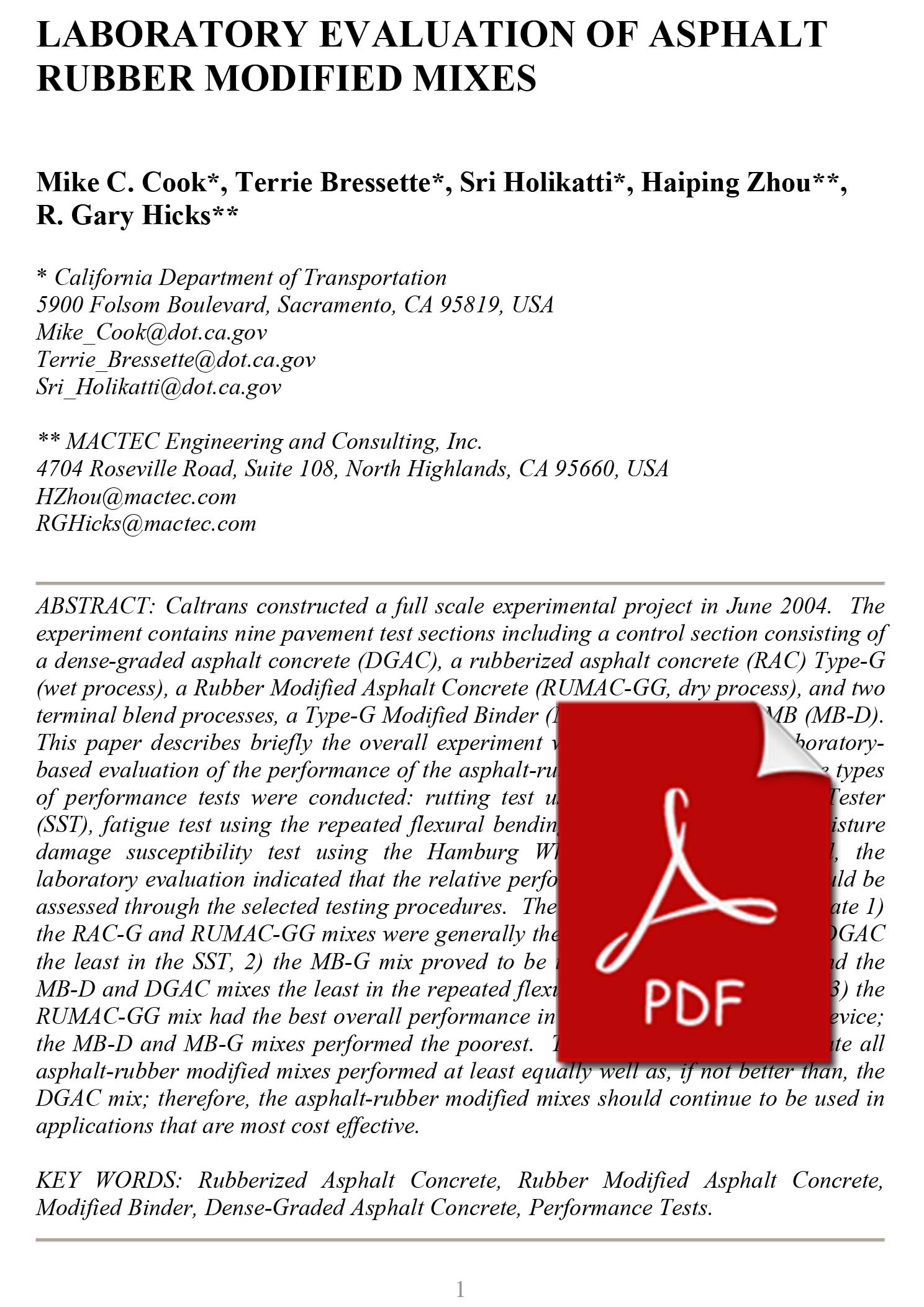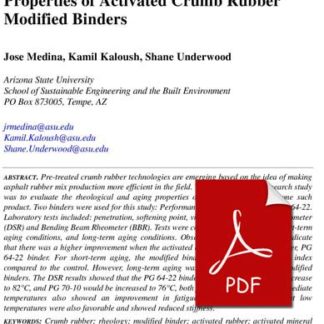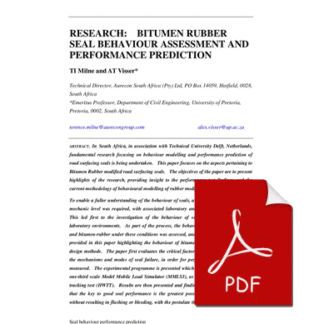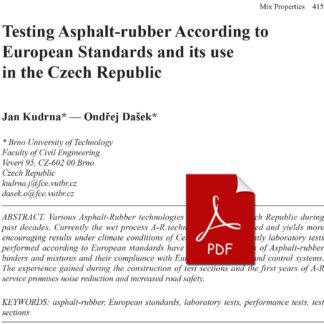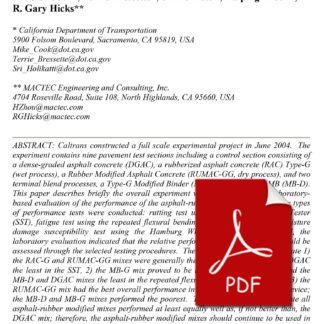Description
Caltrans constructed a full scale experimental project in June 2004. The experiment contains nine pavement test sections including a control section consisting of a dense-graded asphalt concrete (DGAC), a rubberized asphalt concrete (RAC) Type-G (wet process), a Rubber Modified Asphalt Concrete (RUMAC-GG, dry process), and two
terminal blend processes, a Type-G Modified Binder (MB-G) and a Type-D MB (MB-D). This paper describes briefly the overall experiment with emphases on the laboratorybased evaluation of the performance of the asphalt-rubber modified mixes. Three types of performance tests were conducted: rutting test using the Superpave Shear Tester
(SST), fatigue test using the repeated flexural bending beam test, and rutting/moisture damage susceptibility test using the Hamburg Wheel Track device. Overall, the laboratory evaluation indicated that the relative performance of various mixes could be assessed through the selected testing procedures. The laboratory test results indicate 1)
the RAC-G and RUMAC-GG mixes were generally the most rut resistant and the DGAC the least in the SST, 2) the MB-G mix proved to be the most fatigue resistant and the MB-D and DGAC mixes the least in the repeated flexural bending beam test, and 3) the RUMAC-GG mix had the best overall performance in the Hamburg wheel track device;
the MB-D and MB-G mixes performed the poorest. The laboratory results indicate all asphalt-rubber modified mixes performed at least equally well as, if not better than, the DGAC mix; therefore, the asphalt-rubber modified mixes should continue to be used in
applications that are most cost effective.

